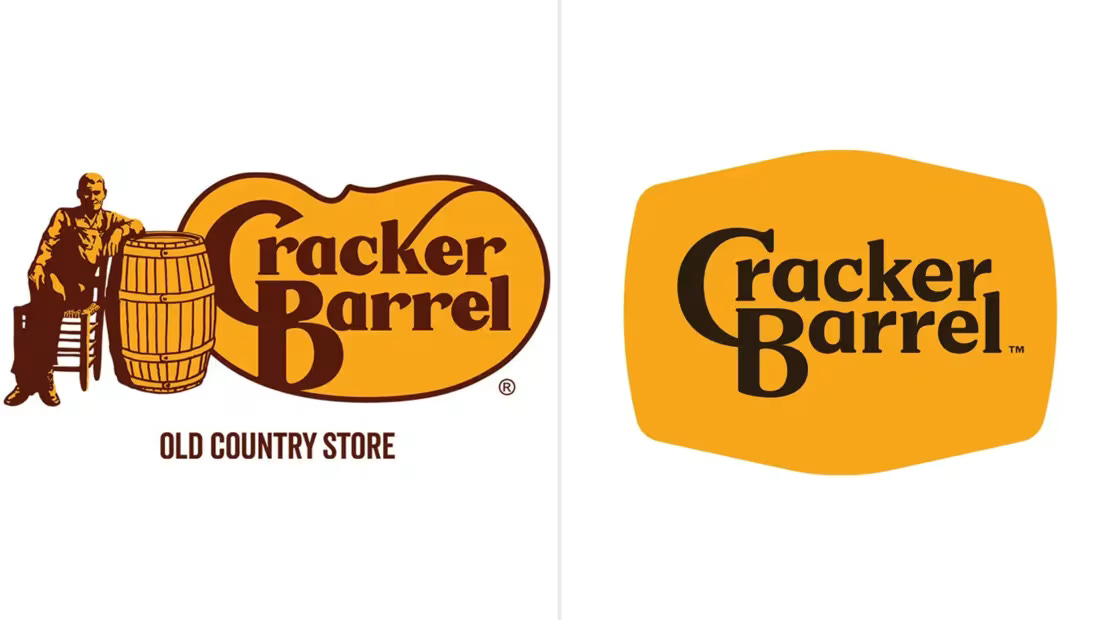Artists, Don’t Become Cracker Barrel
Cracker Barrel just taught creative founders why you should start with branding when you start your creative business.
Are you building a business around your creative work? Subscribe to The Creative Build to get help in your inbox, 2x per week.
I promise this isn’t a political post. It’s a lesson for artists starting a business.
But we have to wade through some politics to get there.
Cracker Barrel’s recent brand missteps ignited political debate in the US. It’s fascinating that people from both sides are unhappy about their changes.
That universal pushback makes Cracker Barrel a great case study for this week’s advice seeker:
“I have a full time job and I paint and sell my work on the side. Someday I want to start a business and be a full time artist. Where should I start?”
Easy answer: Start with branding.
Branding will unlock your ability to go full time. It will help you sell your work and build a large following.
And most importantly, it will help you avoid selling out when capitalism’s darker side inevitably tempts you.
Cracker Barrel teaches creative founders that branding isn’t just another task in a long list of things you have to do. It’s your foundation.
Good Branding is Curating Experience
We often think of a brand as a logo or a color scheme that represents your business. But that’s, at best, an oversimplification.
Your brand is an abstract. It represents the emotional relationship between you and your customers.
That relationship forms as customers experience you and have an emotional response.
If the experience enhances their life, they become fans and might buy your work.
If it doesn’t, they walk away.
So if you want to build a big following and a successful business, curating an experience for your customers that gets more of them to become fans and buy work makes sense.
That’s all good branding is. Enhancing lives consistently in a way that entices people to buy.
If you need help doing that, here’s a branding guide I published a few weeks ago.
Changes at Cracker Barrel
Say what you want about the Cracker Barrel experience but it was successfully curated for a specific audience of people—white people in the South—despite its expansion to 45 states over the years.
Disclaimer: I’m a white person who grew up in the South and currently lives there. While I’m not a big fan of Cracker Barrel, my youngest child and I used to go there after an oil painting class to eat mac and cheese, look at toys, and play the peg game.
This summer they abandoned their experience and their logo. Why? Well according to their blog:
“Rather than just showing one person, we wanted to feature lots of people. The idea was to celebrate the diversity of all our guests with a logo that represented our continued passion for pleasing people of all races, colors, and genders.”
That’s a noble pursuit. But the rebrand didn’t actually please anyone.
It angered Cracker Barrel’s core audience who are more likely to be politically right and against any move toward inclusion.
But it didn’t please the political left either. For two reasons. First, Cracker Barrel’s history makes it difficult to trust them. And second, the logo and decor images they released—don't scream inclusion. They’re corporate bland. As if Cracker Barrel has been taken over by private equity and is being stripped of its soul (which is not actually the case but happening a lot elsewhere).
The Big Lesson
The big lesson from Cracker Barrel is to start curating the brand experience you want your ideal audience to have right now. Before you build a big following.
Once you have a following, their loyalty is rooted in whatever history they experienced with you. If you haven’t explicitly shown them what you stand for along the way, they get to fill in the blank with their own values.
And if you don’t align with those values and want to make a change later? You can’t. You already have a history of representing them by default. Whether you meant to or not.
If you try to change because you don’t like what you’ve become, you lose all your loyal customers. And you have a hard time attracting new ones because your history suggests they shouldn’t believe you.
This Week
Prioritize your brand this week. You can go through the brand guide linked above but it’s okay to start small.
List the values that you want your brand to represent. Those you’ll never compromise. The ones that will cause you to walk away from customers who don’t support them.
Because the last thing you want—is to build an entire business around customers you can’t respect.
Got a question you’d like me to answer in a future issue of The Weekly Build? Reach out or leave a comment.
Want more help like this to boost your creative business? Now’s your chance.




